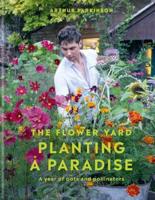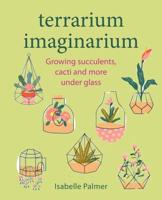Publisher's Synopsis
If you want to learn how to build your own hydroponic garden, then keep reading...
Greenhouse gardening capitalizes on a stable temperature to prevent plants from exposure to many of the problems that often lead to failure. Things like extreme cold, heat, wind, rain, and weeds can be fended off with an adequate greenhouse structure.
Once built, it is easy to monitor growth and provide any other needs using utilities and other environmental controls. Water can be either manually or automatically provided through, hand watering, drip lines, spray systems, or sprinklers. Lights can give extended growing times when the sun isn't out. Ventilation can be used to increase or decrease the humidity and regulate heat within the greenhouse.
Having a controlled environment allows you to plant during off-seasons and provide artificial weather for your plants. The lack of extremes helps plants during the first few days through full-cycle production. Large greenhouses are more ergonomic because the elevated plant beds are located above ground level so plants can be easier to manage, rotate, and care for. This is vastly different from traditional gardening in that the plants aren't sown directly in the soil. Instead, they are planted in potting soil until they are large enough to be transported outdoors, or into larger pots for continued growth indoors.
This book covers the following topics:- What is hydroponics and how hydroponic cultivation works
- Advantages and disadvantages of hydroponics
- Differences between soil and water crops
- Different types of hydroponics system
- Your personal tools and equipment as
- How to build your personal hydroponic system
- Different examples of cultivation of vegetables, herbs and fruits.
- Nutrients, minerals and oxygen, ph level, their importance
- Light: use of natural light and artificial light
- Tips and tricks
- Pest control
Greenhouses operate on a simple principle - trap heat and absorb sunlight-the structure and materials incorporated in a greenhouse help to create this effect. Greenhouses allow for light, retain heat, and will protect plants with minimal effort from a gardener.
First, energy from the sun in the form of radiant heat and light is projected through the outer walls and roof of the greenhouse. Surfaces inside the greenhouse absorb the light and radiate heat. Then, the greenhouse blocks the convection of heat from escaping. Instead, the heat is absorbed and retained within the greenhouse. As heat absorbed within the greenhouse rises, it prevents air movement, and the entire structure remains a constant temperature until heat is released through vents and doors. Air movement outside the greenhouse doesn't affect the inside temperature. This allows heat to remain inside even if the air outside is much colder.
Because plants thrive in constant, stable environments, greenhouses are a simple yet effective way to provide an ideal environment for growth. When sunlight is not available, artificial lighting can provide a substitute to keep plants thriving. When rain is not available, water may be provided in the form of irrigation or by hand.
Want to learn more about Greenhouse Gardening? That's right I've created this book to help people like you. What are you waiting for? Click to buy now!









